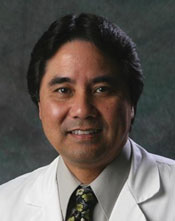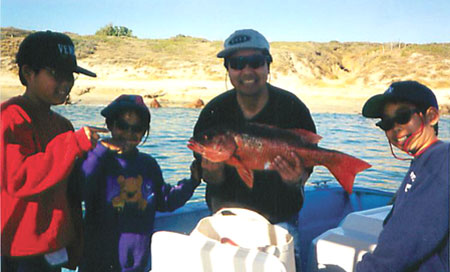Jon A. Kobashigawa, MD, is a pioneer in heart transplantation
Research conducted by Kobashigawa has changed the way that specialists treat patients receiving transplanted hearts.
Click Here to Manage Email Alerts
Jon A. Kobashigawa, MD, is not only a world-renowned expert in heart transplantation and advanced HF but also a jazz enthusiast, a lover of impressionism and an advocate for education.
Currently the associate director of the Cedars-Sinai Heart Institute in Los Angeles and director of advanced heart disease and heart transplantation at the institute, Kobashigawa received his doctorate from Mount Sinai School of Medicine in New York. After graduation, he completed his internship and residency in internal medicine as well as his cardiology fellowship at the University of California Los Angeles Medical Center.
Kobashigawa is an internationally renowned leader in the field of heart transplantation and is also a specialist in advanced HF, cardiac catheterization, athletic heart syndrome, valvular heart disease and sudden cardiac death. He has served as a past president for the International Society of Heart and Lung Transplantation and was the program chairman for the 2000 International Society of Heart and Lung Transplantation Scientific Meetings in Osaka, Japan. He has also served as chairman for the American College of Cardiology Committee on Heart Failure and Transplantation.
Kobashigawa has also published more than 200 articles, book chapters and monographs on heart transplantation, including a landmark paper in the New England Journal of Medicine from 1995 that was the first to suggest that statins could help confer a survival benefit among transplant recipients.
|
Associate Director and Director of Advanced Heart Disease and Heart Transplantation at the Cedars-Sinai Heart Institute in Los Angeles. Member, HF and Transplantation section of Cardiology Today’s Editorial Board. Former President for the International Society of Heart and Lung Transplantation. Former Program Chairman for the 2000 International Society of Heart and Lung Transplantation Scientific Meetings in Osaka, Japan. Former Chairman for the American College of Cardiology Committee on Heart Failure and Transplantation. |
What do you enjoy doing when you’re not practicing medicine?
I like to golf. My game is not very good, and I just started about three years ago. The wife said I could start golfing once the kids went to college. I also like to fish and go on family trips.
If you hadn’t gone into cardiology or medicine, what would you have done?
I would have gone into astronomy. I always had that interest when I was young. I read Science magazine and never miss any of the astronomy sections. It’s one of the more “Star Trek”-ish things about me.
What would you consider one of your biggest successes in your specialty?
Defining the use of statins in heart transplantation. In 1995, a paper of mine was published in New England Journal of Medicine about the use of statins increasing survival and reducing severe rejection in heart transplantation. It was one of the first papers to suggest an immunomodulatory effect for statins. I believe it is brought out with the use of cyclosporine, because cyclosporine interacts with pravastatin.
What is the last book you read/art collection you saw/CD you bought? Why, and what did you think of it?
I enjoyed some of the Dan Brown books recently. Angels and Demons was very entertaining.
I was in Paris about a year ago and visited a Monet exhibit. They also had some of the other impressionists. They have always captivated me, and I’ve always enjoyed impressionist work.
I’m somewhat of a jazz enthusiast. There is a Japanese-American group called Hiroshima. I actually went to one of their shows this past winter, and they’re fabulous — very relaxing.
Who do you most admire, and what would you ask that person if you had five minutes with him/her?
My grandfather, whom I’ve never met. He was one of the pioneers who emigrated from Japan to the United States, and I’ve always wondered why and how he did it. I think knowing one’s heritage and family history is very important, and it is something I would love to talk to him about. I would like to learn about the lifestyles of his father’s fathers, going back further.
What is the best advice you’ve ever received?
Both my parents were teachers, and my father always stressed education. He was educated in Japan and then again at the University of Hawaii and the University of Southern California. I remember him saying something like, “People can take a lot away from you — your house, your home and even your kids — but one thing they can never take away from you is your education.” That has certainly been the best advice I’ve ever received.
Who do you consider a mentor?
I would definitely have to say Joseph Perloff, MD. Dr. Perloff, when I was training at UCLA, was my chosen mentor, and he truly taught me how to use my clinical skills to make the diagnosis of heart disease. He is truly one of the master physicians of days of old.
|
Photo courtesy of: Jon A. Kobashigawa, MD |
What kind of diet and exercise regimen do you have?
I guess my wife takes a lot of credit for this, regularly preparing a low-fat diet. She keeps me on that straight and narrow path. I also use an elliptical a couple times per week, and I walk often.
What do you think will have the biggest influence on cardiology in the next 10 years?
I think genomics will play an important role in the way we treat cardiology — and probably all of medicine. Knowing how patients may respond to certain medications because of their gene polymorphisms may truly be the way to guide us into custom therapy for patients, and I think that will come to fruition within the next 10 years.
What is your favorite travel destination?
I like to visit the Caribbean, where I enjoy lounging on the beach.
What is your favorite restaurant?
There is a great seafood restaurant in Santa Monica called Crustaceans that I really enjoy. – by Eric Raible


